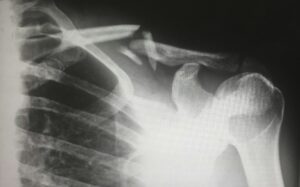Table of Contents
ToggleWhat Are the Causes and Effects of Brain Stem Injuries?
Scientists sometimes refer to the brain stem as the lizard or reptilian brain. These phrases describe the evolution of the brain. The brain stem was one of the earliest structures to form. Therefore, it looks and functions like a reptile’s brain.

The brain stem does not perform higher brain functions like those associated with cognition or memory. Instead, it handles vital functions to keep your body and brain alive and functioning.
What Is the Brain Stem?
The brain stem sits at the base of your skull and makes up the bottom portion of your brain. The name “brain stem” refers to the shape of the structure — it is elongated and extends downward to join the spinal cord.
The brain has different segments responsible for different functions. For example, the large gray folded region of the brain processes language, emotions, decision-making, and other higher brain activities. Scientists often refer to this area as the mammalian brain because it was the most recent to evolve.
The brain stem handles much less sophisticated but vital tasks. It acts as a waypoint connecting the brain to the spinal cord. It also controls many of your involuntary processes.
The brain stem has three segments:
Midbrain
The midbrain sits almost even with your eyes, below the cerebral cortex. Several cranial nerves pass to the face and head from the midbrain.
These nerves include:
- The optic nerve, which carries visual signals from the eyes to the brain
- The vestibulocochlear nerve, which transports sound and balance signals between the ears and brain
- The trochlear nerve, which controls eye movement
This brain region pre-processes visual signals before they reach the visual cortex and sound signals before heading to the auditory cortex. It also coordinates signals from other parts of the brain to the spinal cord.
Pons
The pons wraps around the brain stem. It connects to four more cranial nerves responsible for facial movements and taste. It connects to the cerebellum so your body can maintain its posture and balance. It also acts as a relay for nerve signals from the body carrying pain signals.
Finally, it controls your sleep cycle. Neurotransmitters from the pons trigger the release of hormones that tell your body when to sleep and wake up.
Medulla Oblongata
Most of the brain stem acts as a relay to coordinate and prioritize signals across the brain and between the brain and body. However, the medulla oblongata contains control centers that produce nerve signals.
These centers control your vital functions, including:
- Heartbeat
- Breathing
- Blood pressure
- Swallowing and throat-clearing
- Sneezing
Without these involuntary reflexes, you die.
What Causes Brain Stem Injuries?
The location of the brain stem protects it from many types of injuries. Since it sits at the base of the skull, an impact to the top or front of the head usually will not affect the brain stem.
Instead, studies suggest most brain injuries come from four types of trauma:
Nervous or Vascular Compression
These injuries happen when the nerves or blood vessels running to the brain stem get compressed. This can occur when the spine hyperextends, and the neck vertebrae push up into the brain stem. The pressure of the vertebrae on the brain can damage the brain stem and the structures connected to it.
Compression injuries can happen in car accidents when your spine hyperextends as your body experiences whiplash.
Shearing Forces
Shearing happens when you have two opposing forces that tear a material apart. In brain science, shearing produces diffuse axonal injuries (DAIs). Brain cells have long tails called axons. When your brain moves inside your skull, the cells get stretched. Too much stretching causes DAIs.
Since it sits at the bottom of your brain, powerful accelerations or rotations can cause your brain to shift violently, tearing the neurons in the brain stem. These injuries can happen in high-speed car crashes, pedestrian accidents, and high-elevation falls.
Occipital Blows
Blows to the back of your head can cause your head to tilt forward. This motion can tear the brain stem and push the neck vertebrae into the base of the skull. These blows can also impact the skull directly behind the brain stem, leading to bruises, lacerations, or bleeding in that brain region.
A fall onto your back in a high fall or a slip and fall accident can produce an occipital blow that damages the brain stem.
Neck Impacts
An impact to the back of your neck will pull on the spinal cord. This pulling can reach the brain stem, shearing the brain cells. Neck impacts can happen in a rear-end crash when your head and body whip backward into your headrest.
What Are the Effects of Brain Stem Injuries?
The brain stem plays a vital role in keeping you alive. An injury to this region of the brain can leave you dead or incapacitated. Specifically, since the medulla oblongata controls your heart and lungs, you can die instantly from a lack of respiration or circulation from a brain stem injury.
If you survive, you can suffer catastrophic injuries, including:
Brain Death
Brain death occurs when an accident victim has no brain function and requires artificial life support to stay alive. Since an injury to the brain stem ends the brain’s ability to control the heart and lungs, brain death always involves a brain stem injury.
Paralysis
The cerebellum is just behind your brain stem and controls movement, balance, and posture. The pons relays signals from the cerebellum to your spinal cord. When the pons is damaged, signals from the cerebellum cannot reach your muscles, and you become paralyzed.
Locked-In Syndrome
When you suffer from locked-in syndrome, your higher brain functions perform normally. But you become trapped in your body, unable to move or speak.
The pons acts as the relay between your cerebellum and spinal cord. The midbrain relays signals between your brain and cranial nerves. As a result, you can suffer from locked-in syndrome after a brain stem injury.
Can You Recover from a Brain Stem Injury?
Brain stem injuries are catastrophic. Even if the accident victim survives, they will have permanent brain damage that disables them physically. After a brain stem injury, they may lose the ability to work or perform the tasks needed to care for themselves, like dressing and showering.
However, the brain is highly adaptable. With time and proper treatment, some brain stem injuries can show extraordinary recovery.




